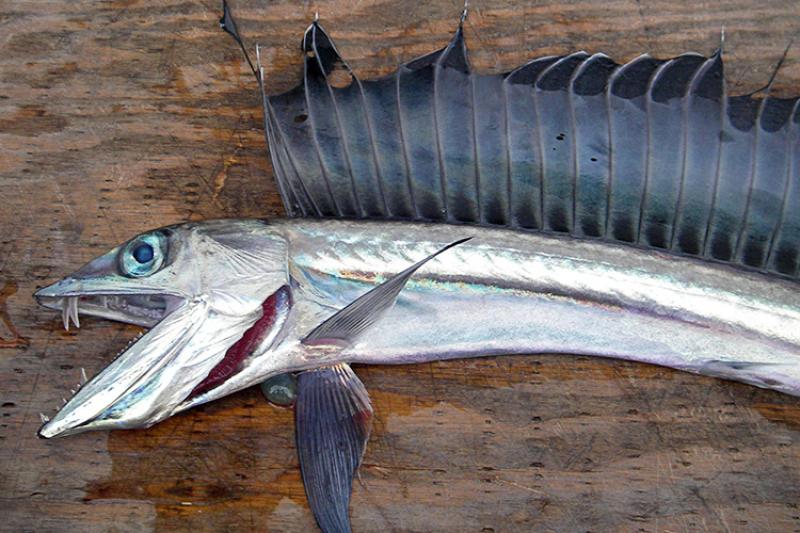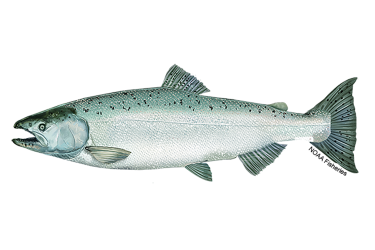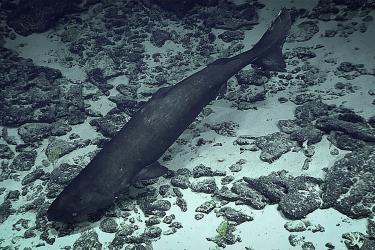Find out why Lancetfish Really are Creatures from the Twilight Zone
-
Lancetfish look like they swam out of prehistoric time. Features include gaping fanged jaws, enormous eyes, a sail-like fin, and long, slithery body.
-
Their dinosaur-worthy scientific genus name, Alepisaurus, means "scaleless lizard." Lancetfish are scaleless fish, with smooth skin and pores along the lateral line.
-
Growing to more than 7 feet long, lancetfish are one of the largest deep-sea fish. These fish swim to depths more than a mile below the sea surface.
-
Lancetfish live mainly in tropical and subtropical waters, but they migrate as far north as subarctic areas like Alaska’s Bering Sea to feed. Since 1982, our groundfish surveys have found 2 in the Gulf of Alaska, 4 near the Aleutian Islands, and 10 in the Eastern Bering Sea.
-
Lancetfish are hermaphrodites, possessing both male and female sex organs simultaneously. We know very little about lancetfish reproduction and development.
-
Lancetfish flesh is watery and gelatinous and generally not appetizing to humans. However, other large predators like sharks, tuna, and fur seals — and other lancetfish — don't mind.
-
Gelatinous muscles are not built for long chases. Because of this, scientists suspect lancetfish are ambush predators. This means they hunt by floating quietly camouflaged in the water until unsuspecting prey swims near enough to strike.
-
In 2018, our scientists examined the stomach contents of lancetfish. This helped us understand the midwater food web and impacts of marine debris extend through the water column.
-
Food in lancetfish stomachs is often found in a nearly pristine state. Based on the lack of digestion, scientists speculate that lancetfish may bulk feed. This means they eat as much as they can whenever they find food, then digest it later when they need it.
-
Lancetfish are notorious cannibals. They also feed voraciously on many other fish and invertebrates. Many new species descriptions of fish, squids, and octopuses are based on specimens from lancetfish stomachs.
-
The cold, dark midwater depths where lancetfish hunt are known as the twilight zone or mesopelagic zone.







